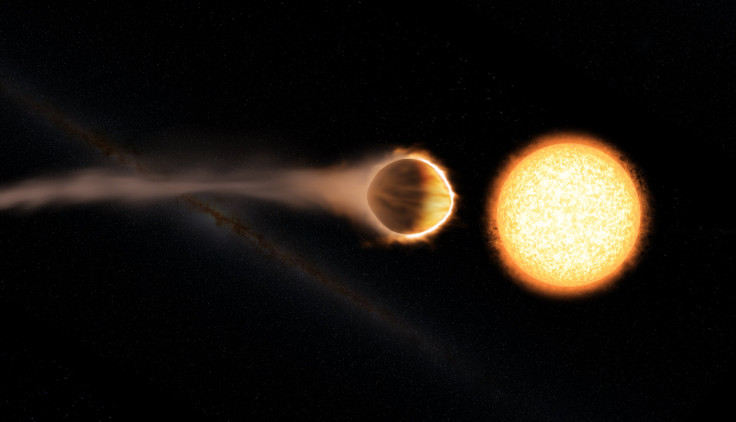Hubble Finds 'Hot Jupiter' Exoplanet Has Glowing Atmosphere Of Water

The Hubble Space Telescope has relayed information that helped scientists discover that an exoplanet in a system 900 light years away from Earth may have a stratosphere. The finding is noteworthy because it shows that an exoplanet so distant from our own galaxy can still exhibit similar traits to planets that are a little more local. In this case that commonality is an atmospheric layer where the temperatures increase as altitude does called the stratosphere.
The stratosphere is present on exoplanet WASP-121b, a “hot Jupiter” planet, because it’s similar in size to Jupiter but a little bit “puffier,” according to NASA. But the planet is so close to its sun that the temperatures are warm enough to boil metals.
Read: NASA's Voyager Spacecraft Nears 40th Anniversary, Still Transmits Data
While other “hot Jupiter” classified exoplanets have been suspected of having stratospheres, none had been confirmed until hot water molecules were seen on WASP-121b. Hubble’s equipped with spectroscopy instruments that can measure how water vapor interacts with certain wavelengths of light. The vapors react differently at various temperatures.
By examining the wavelengths of light that emits into space from the gas on the planet, researchers can determine how much water vapor there is in the atmosphere and what temperature it likely is. Cooler water vapor in the upper part of the atmosphere can block certain wavelengths of infrared light from making it to space, says NASA. But warmer water vapor will emit the same wavelength. Those molecules give off radiation as infrared light as they lose energy. From the amount of light escaping to space, researchers were able to determine that temperature is increasing with height.
On WASP-121b the stratosphere changes in temperature by 1,000 degrees. A much larger jump in temperature than occurs on Earth. While scientists were able to discover the water vapor’s existence, they still don’t know what chemicals cause the jump in temperature in the stratosphere. "This super-hot exoplanet is going to be a benchmark for our atmospheric models, and it will be a great observational target moving into the Webb era," Hannah Wakeford, study co-author who took part in the study from NASA's Goddard Space Flight Center told NASA.
Read: 10 Of The Most Exciting NASA Missions Scheduled To Launch In The Next 5 Years
The Hubble telescope orbits Earth at 17,000 miles per hour and has been collecting data on distant space since 1990. It’s successfully completed more than 13 million observations to air NASA in the study of space. The Webb will continue the exploration in space once it launches in 2018 with new technologies that may help researchers determine even more about exoplanets like WASP-121b.
© Copyright IBTimes 2024. All rights reserved.




















